*Author: Tianhui
At 429,900 yuan, the ARCFOX RAVFOX Alpha S breaks through the price ceiling of domestic brand cars.
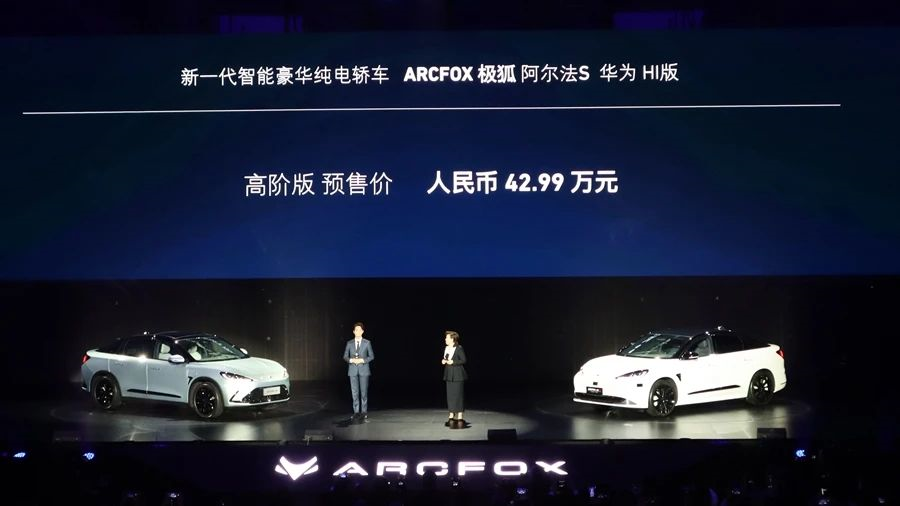
Without some hardcore strength, it is unlikely to be recognized by the market at such a high price.
Just before the public pre-sale, a video of the vehicle’s autonomous driving capabilities surfaced online, showing the ARCFOX RAVFOX Alpha S expertly avoiding delivery bikes on city roads and traveling long distances without human intervention – essentially achieving urban autonomous driving functionality.
Currently, no other model can achieve such capabilities.
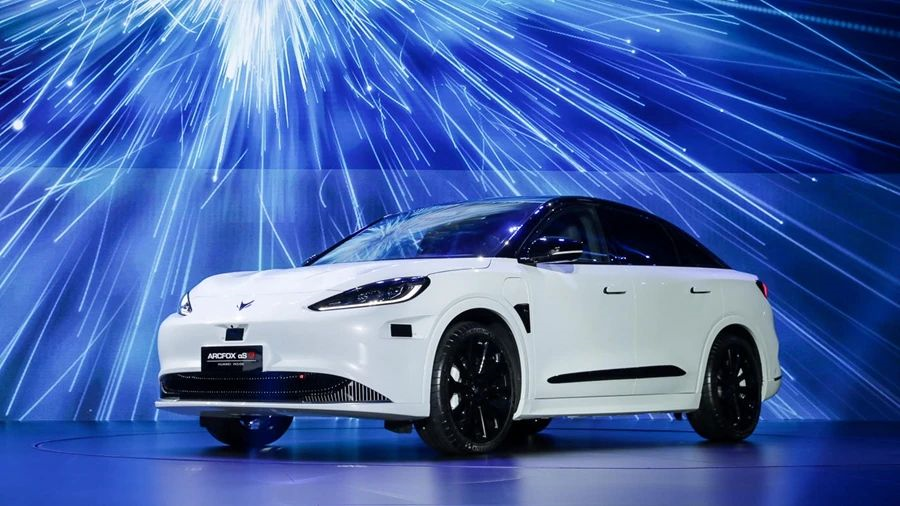
The successful achievement of this level of autonomous driving by the ARCFOX RAVFOX Alpha S owes much to its development team, which is none other than the Huawei Intelligent Automotive Solution Business Unit.
It is precisely because of Huawei that the pre-sale launch event of the ARCFOX RAVFOX Alpha S has garnered such attention, and the public is curious about the level of Huawei’s autonomous driving capabilities and whether a city-driving capable car is worth the high price.
On the evening of April 18th, accompanied by a gentle spring breeze and dim starlight, ARCFOX RAVFOX provided an answer – Huawei’s autonomous driving capabilities are stunning, but the price is also quite high, with a highest pre-sale price of 429,900 yuan.
400 TOPs computing power
The Huawei HI version of the Alpha S, which can achieve city autonomous driving functionality, has a chip computing power of 400 TOPs.
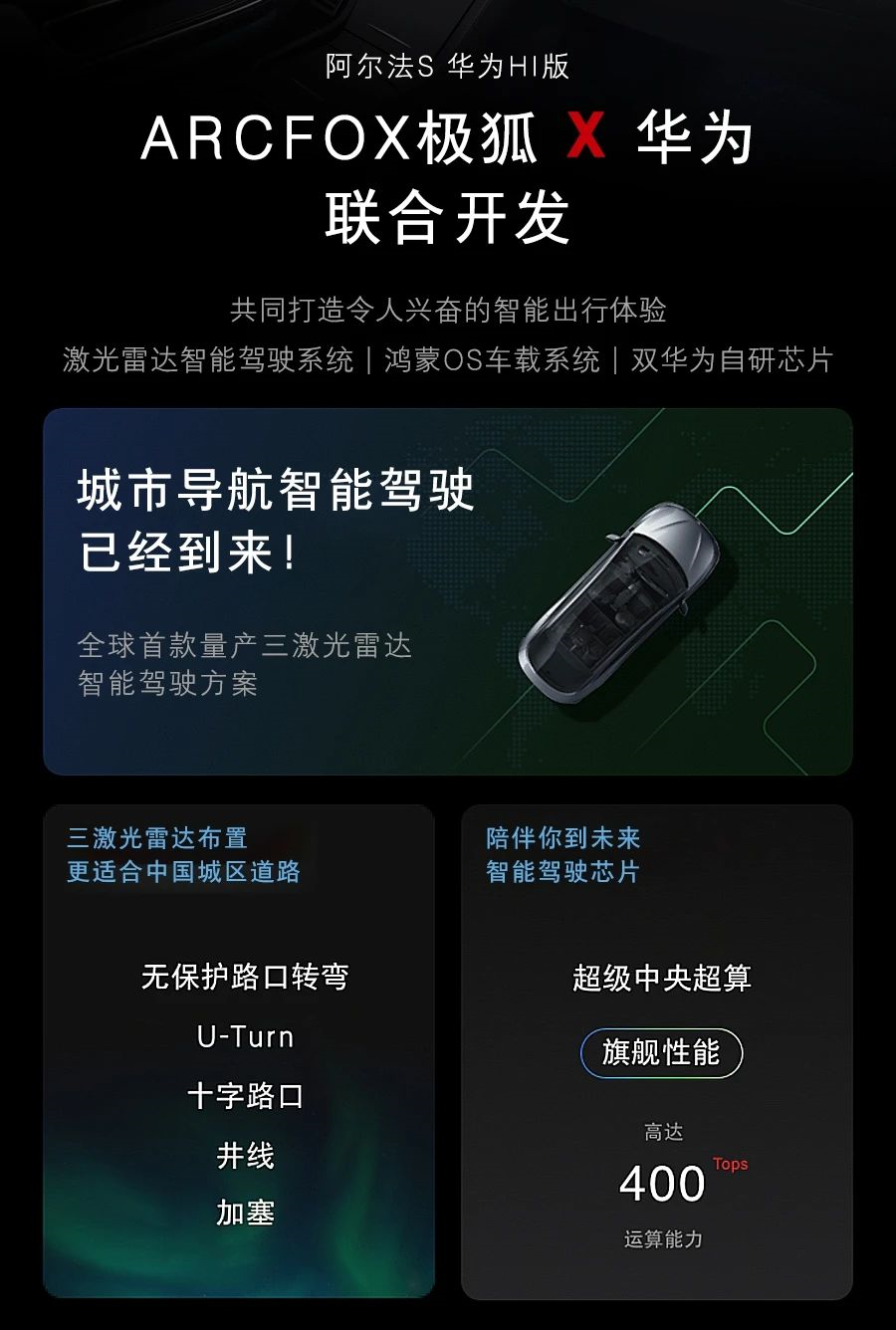
With dual-chip computing power of 400 TOPs, and single-chip computing power of approximately 200 TOPs, this already significantly surpasses the average industry level. Currently, most car companies use autonomous driving chips with computing power below 50 TOPs.
A good horse must be coupled with a good saddle – powerful computing power requires strong perception capabilities to complement it.
ARCFOX RAVFOX Alpha S Huawei HI version is armed to the teeth with automatic driving perceptual hardware configuration.
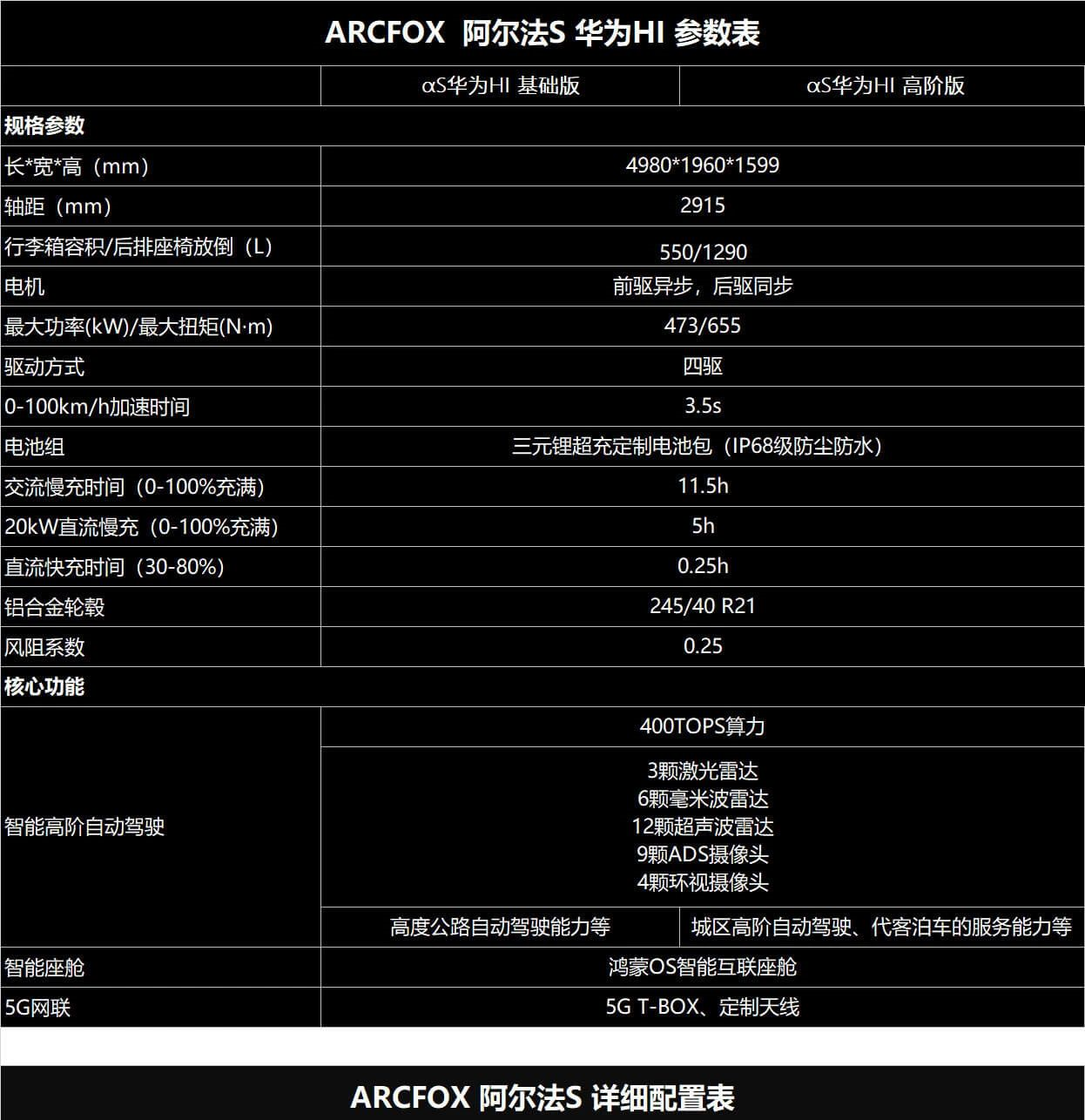 The car is equipped with 3 lidar sensors, 6 millimeter-wave radar sensors, 12 ultrasonic radar sensors, 9 ADS cameras, and 4 surround-view cameras, totaling up to an astonishing 34 hardware devices.
The car is equipped with 3 lidar sensors, 6 millimeter-wave radar sensors, 12 ultrasonic radar sensors, 9 ADS cameras, and 4 surround-view cameras, totaling up to an astonishing 34 hardware devices.
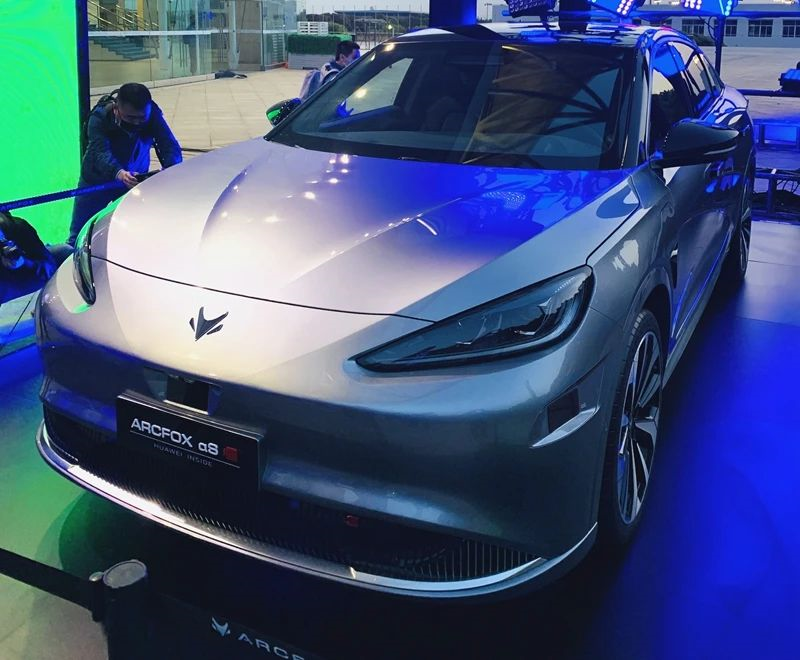
In terms of hardware layout, the three lidars are located in the front of the car, on the left, center, and right respectively, to better perceive the road condition.
Although powerful hardware is essential for autonomous driving, software strength is the real key.
In terms of software development, Huawei’s philosophy is to develop and break through scenarios one by one.
Huawei’s autonomous driving research and development team localized its design for Chinese roads, such as unprotected intersection turns, U-turns, intersection driving, well lines, and cut-ins, which are common scenarios on Chinese roads.
Recently, the scene of avoiding electric delivery vehicles became widely discussed. This is a result of Huawei’s localization design.
From the videos displayed at the press conference, Huawei’s autonomous driving software is able to respond correctly and maintain smooth driving in specific scenarios, such as unclear road markings, cut-ins, and disorderly driving of electric bicycles and bikes that violate traffic rules.
Before delivering at the end of this year, Alpha S Huawei Hi Edition is expected to support more fine-grained scenarios of autonomous driving.
Huawei Inside Not Just Autonomous Driving
The intelligent cockpit is the main theme of Huawei Inside.
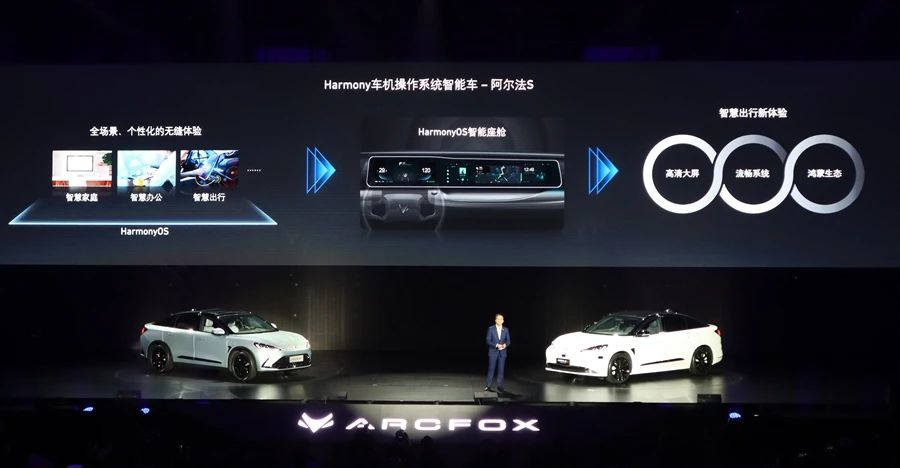
Huawei has specifically developed the HarmonyOS operating system for cars, providing a seamless, personalized full-scenario experience between intelligent smartphones and car systems.
At the user experience level, using Huawei HarmonyOS on a smartphone, consumers can smoothly transition to the HarmonyOS intelligent car system on Alpha S.
In the demo video displayed at the press conference, a consumer using Huawei FreeBus is answering a call. At this point, the consumer opens the door to enter the Alpha S car and removes their headphones. The ongoing call seamlessly switches to the car’s audio system for uninterrupted conversation.
Not only can calls be seamlessly transferred, but data, applications, content, and others can also be effortlessly transmitted from phone to car or vice versa.
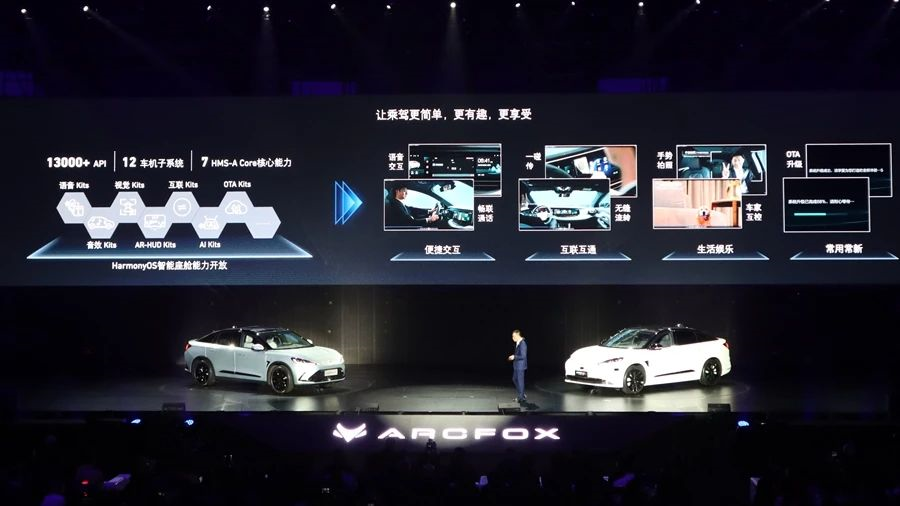 Currently, the Hongmeng OS smart connected cockpit supports up to 23 application ecosystems, including Changlian Call, Gaode, KuGou Music, Kuwo Music, etc. With interactive applications that surpass those on mobile phones, interactive integration between people and cars is achieved.
Currently, the Hongmeng OS smart connected cockpit supports up to 23 application ecosystems, including Changlian Call, Gaode, KuGou Music, Kuwo Music, etc. With interactive applications that surpass those on mobile phones, interactive integration between people and cars is achieved.
In the smart cockpit section of Huawei Inside, it’s not just about getting on the Hongmeng OS. The Kirin chip that is intended to be paired with Hongmeng OS has also entered the Alpha S.
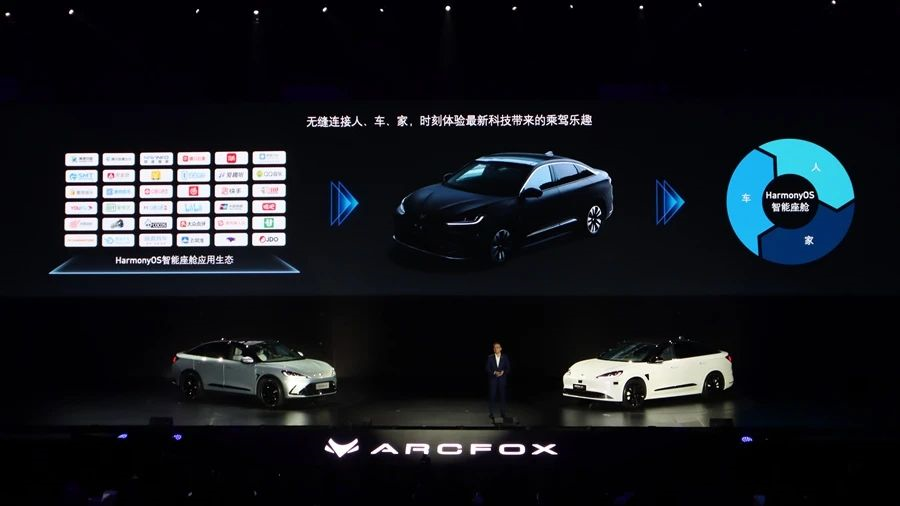
The smart car system of Alpha S adopts Kirin 990A chip with a computing power of 3.5 TOPs. Among ARM car chips, its computing power level is also top-notch.
From the Alpha S, it can be seen that Huawei Inside is a holistic solution combining hardware and software, rather than a solution like Qualcomm or Android original car systems that are single hardware or software.
Fast Charging: Adding 197 km of range in 10 minutes
Electric cars are good in many ways, but range anxiety is not one of them.
This is the biggest problem that car companies encounter as they promote electric vehicles. For consumers who are nearsighted, range anxiety makes it difficult to accept the advantages of electric vehicles in terms of power and driving experience.
Consumers of ARCFORX’s Alpha S may be spared from this concern.
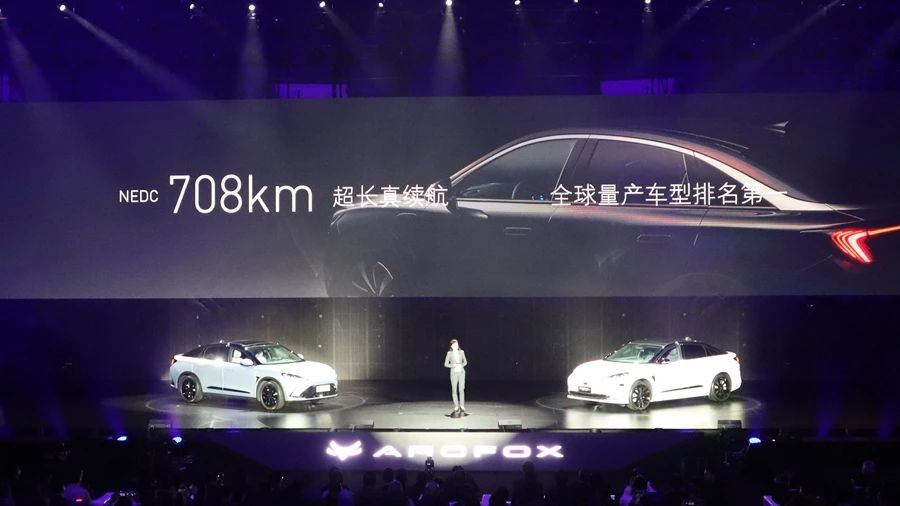
In terms of range, ARCFORX’s Alpha S has a range of up to 708 km and a power battery capacity of 93.6 kWh. The energy density ratio is up to 194 Wh/kg.
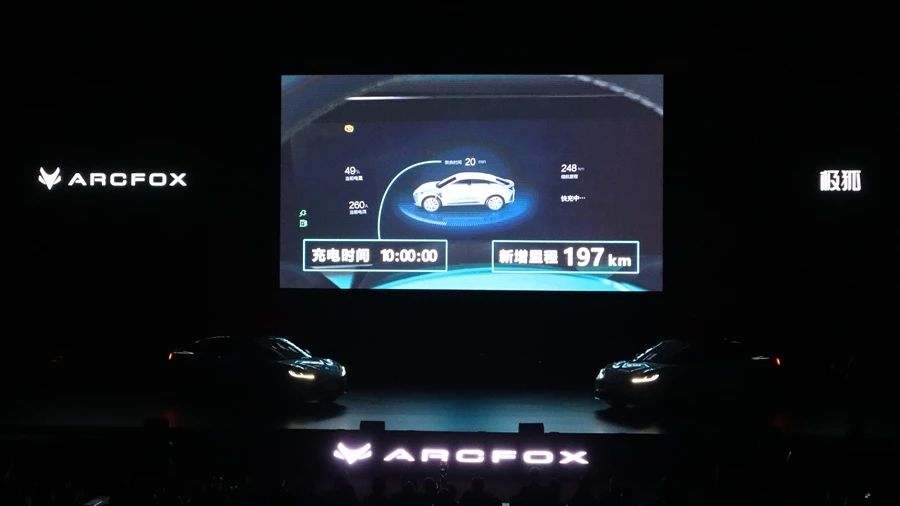
197 kilometers of range can be added in 10 minutes. This is the charging speed achieved on existing national standard charging stations in a demonstration video of the 750V lightning fast charging function released by ARCFORX.
In 5 more minutes, i.e. 15 minutes, ARCFORX will be able to charge from 30% SOC to 80% SOC, which is equivalent to a range of more than 300 kilometers.
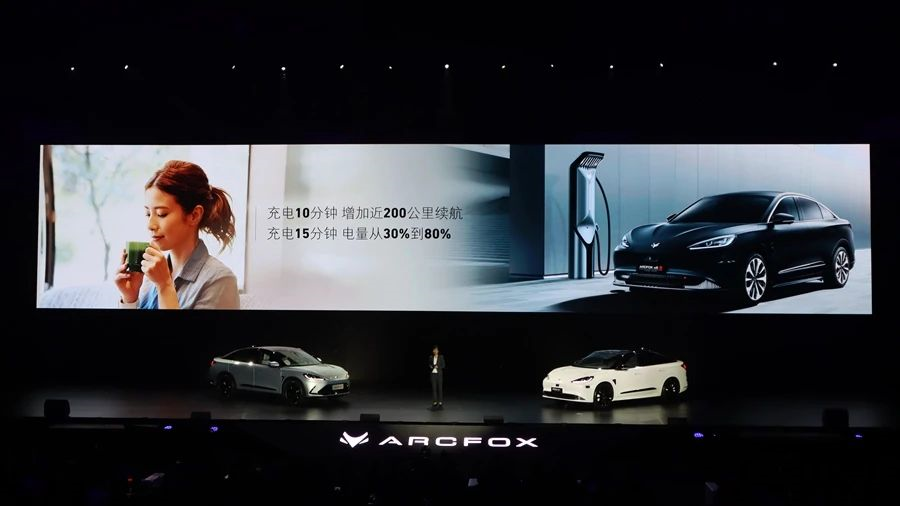
ARCFOX proposed the idea of solving charging in the time it takes to drink a cup of coffee. On the technological level, this fast charging speed is due to highlights.
One of them is that the power battery adopts a high-voltage platform, namely the 750V voltage platform, which doubles the charging speed compared to the existing 400 V platform under the same charging current conditions.Another point is the extreme liquid cooling and cooling technology adopted by ARCFOX, which can achieve a circulation flow rate of 20 L of cooling liquid per minute.
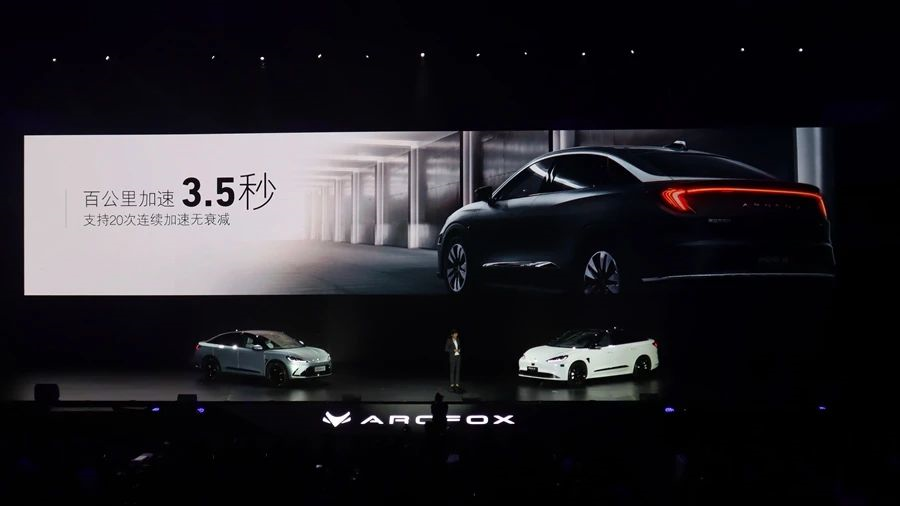
Not only does ARCFOX JIHU Alpha S have a large battery capacity and fast charging, but also sets a new record in the 0-100 km/h acceleration time, taking only 3.5 seconds.
Deeply Bound to Huawei
From the introduction of ARCFOX JIHU Alpha S, it is not difficult to see that ARCFOX has been deeply bound to Huawei.
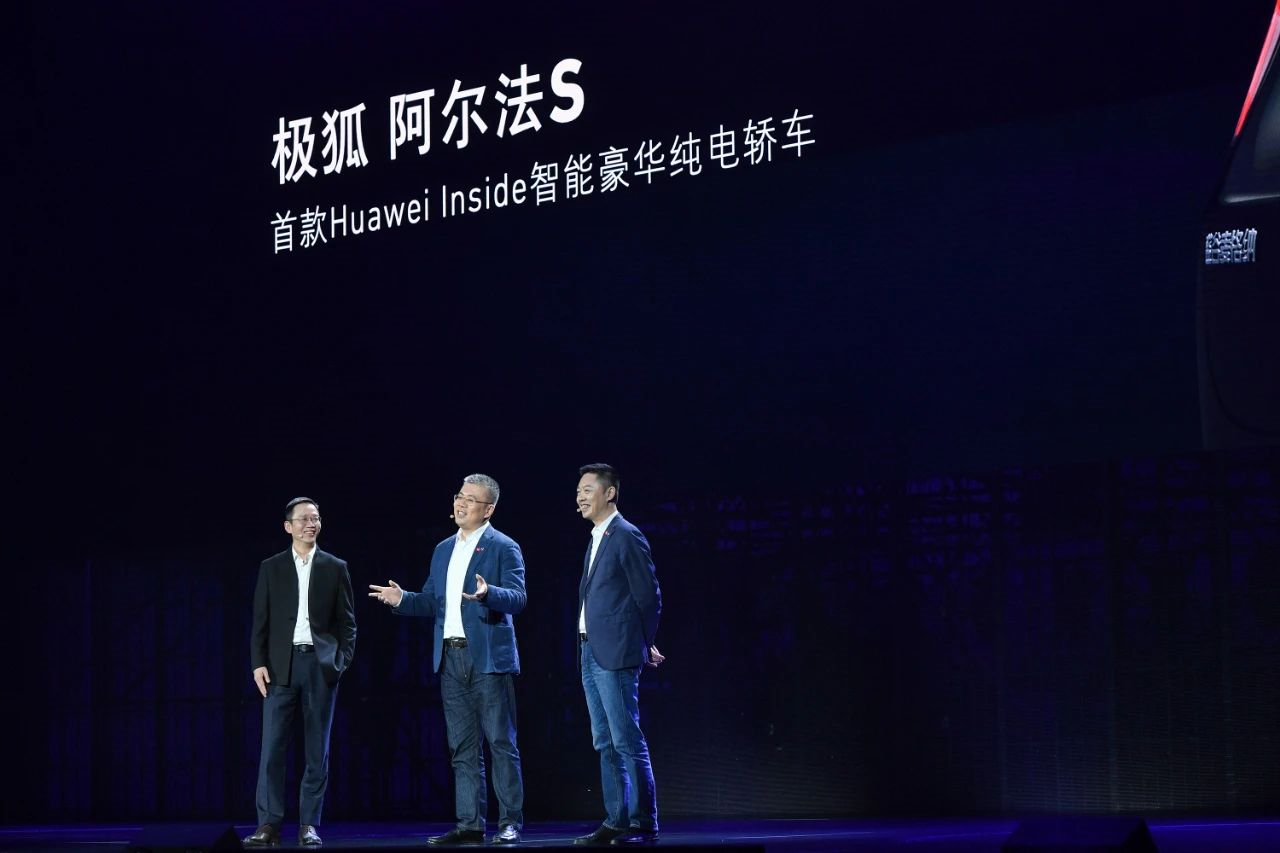
At the press conference, Liu Yu, the chairman of BAIC Blue Valley, and Wang Jun, the president of the Huawei Intelligent Automotive Solution BU, introduced the cooperation between the two.
In the future development of intelligentization and autonomous driving of electric vehicles, ARCFOX JIHU and the Huawei Intelligent Automotive Solution BU department jointly conducted in-depth research and development.
In the development of ARCFOX JIHU Alpha S, up to 3,000 people from both sides have participated in the research and development process.
As for the future, the leaders of the two companies have reached a consensus and only need to cooperate deeply.
Huawei insists on doing well in IOT devices and services, while ARCFOX JIHU does well in cars, with clear division of labor.
From the perspective of public opinion focus, whether Huawei will build its own car has been a long-standing question. However, from an actual perspective, what does it matter if Huawei makes its own car or deeply binds itself with car manufacturers?
This article is a translation by ChatGPT of a Chinese report from 42HOW. If you have any questions about it, please email bd@42how.com.